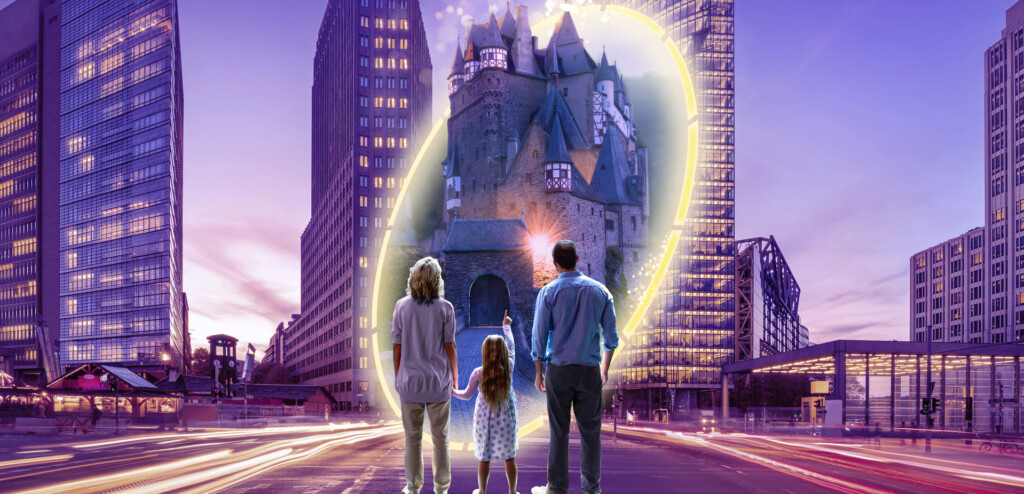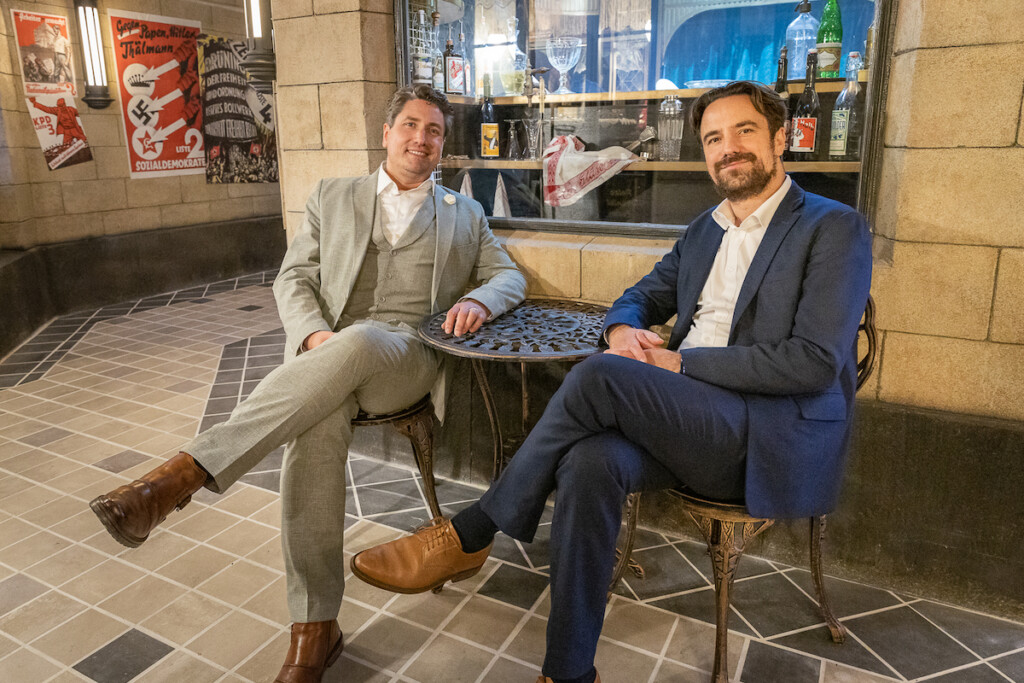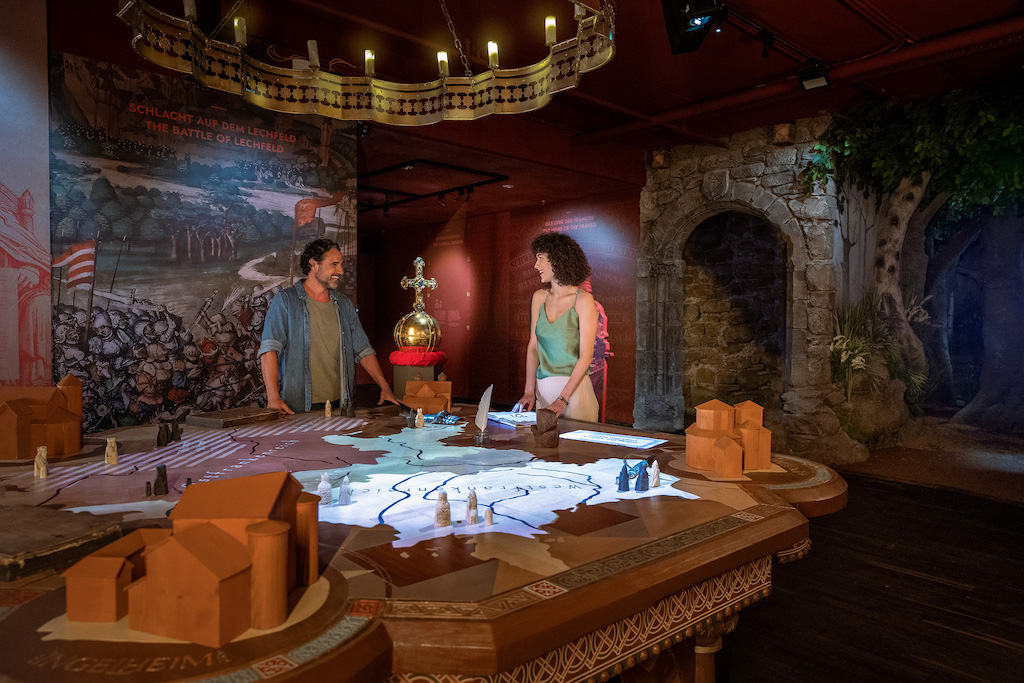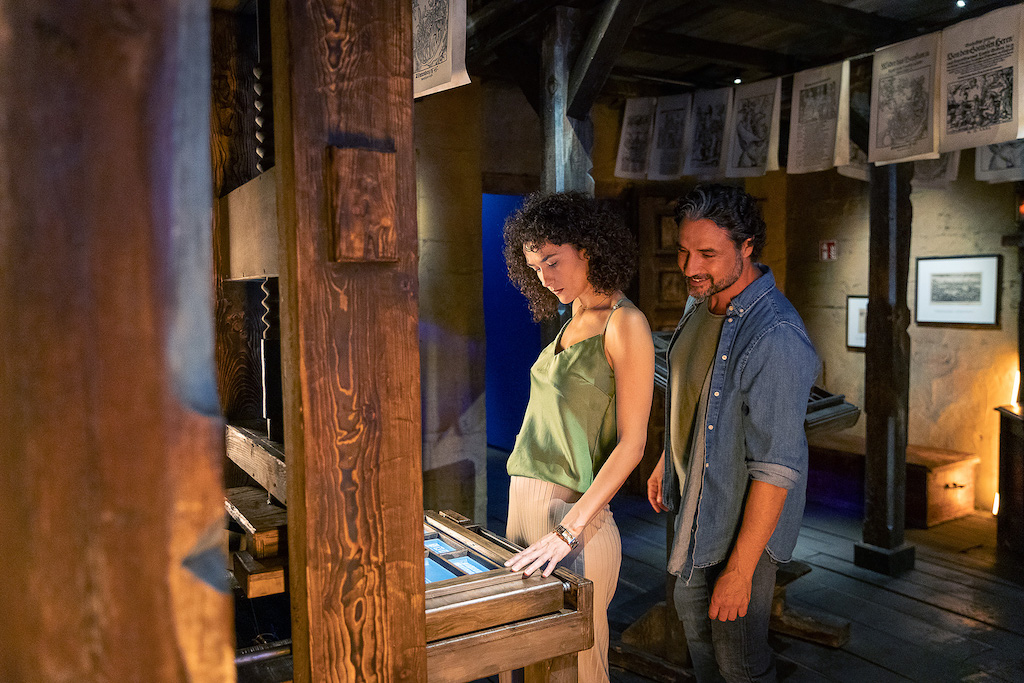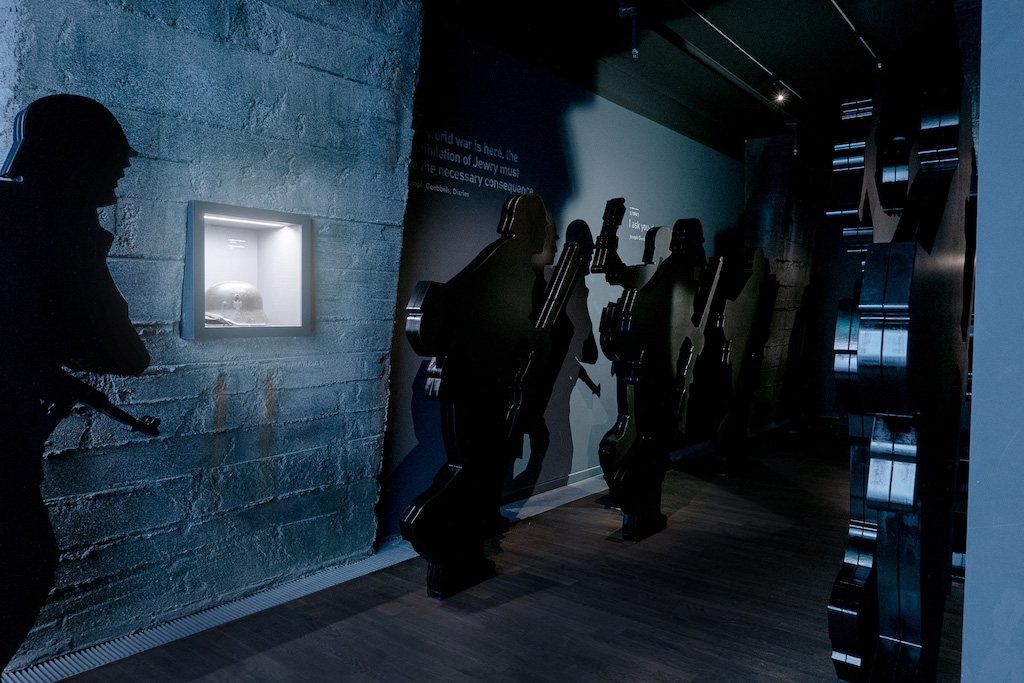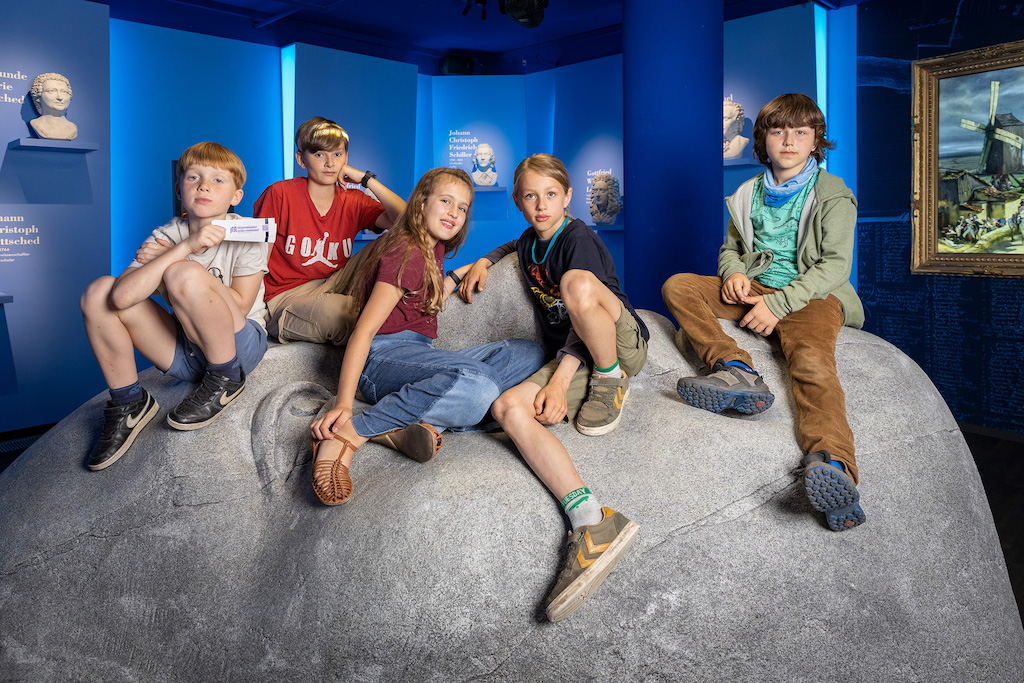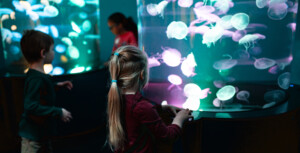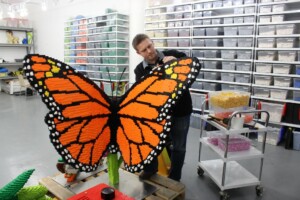Berlin’s Deutschlandmuseum, the sister museum of the German Spy Museum, opened in June 2023. Its visitor journey is uniquely immersive. A close-up perspective on German history presented as a 4-D experience, the museum has generated positive worldwide attention and has been honoured with the prestigious Thea Award for Outstanding Achievement, the first time a German museum has received this award.
Robert Rückel, responsible for the permanent exhibition of the DDR Museum Berlin in 2006 and the German Spy Museum in 2018, is the director of the Deutschlandmuseum, and the driving force behind its conception.
Developing new Berlin museums
Rückel came to the sector, having studied economics and worked as a project manager, as the founding director of Berlin’s DDR Museum, which is focused on the story of socialist East Germany in the 20th century.
“The founder of the DDR museum was looking for a project manager who could manage the opening and the conception of the museum,” Rückel tells blooloop. “At this time in Germany, private museums were very unusual: we were the first, and I was the only one who said, okay, yes, we can do it – we can achieve this. At that point, I thought planned to stay until the opening.”
In fact, he stayed for 11 years as the founding director of the DDR Museum, after which he took the helm of Berlin’s German Spy Museum (Deutsches Spionage Museum) in July 2016.
“It had opened in 2015,” he explains. “I took over in 2016. They had financial problems after the opening, so it wasn’t that successful. We changed everything.”
Under Rückel’s leadership and brand-building, the Spy Museum thrived, becoming extremely successful.
“Then, this year,” he adds. “I opened the Deutschlandmuseum.”
The goal of the Deutschlandmuseum
The ambitious concept behind the Deutschlandmuseum is to showcase the nation’s whole history. He comments:
“There are many museums on special topics – the DDR, or espionage – when you look throughout the world. But no private museum has shown the whole history of a nation. I have children, and when we are on holiday, of course, I always want to go to museums, to show them the history and culture the nation of the country we are in at the time – but there are only the big state-funded national history museums, where you have to stay for two days, and the children are bored after a few minutes.”
It was this that drove Rückel’s vision:
“I said, ‘Why is there no museum for people without previous knowledge who want a short walk through history?’ So this is the vision for the Deutschlandmuseum, for the fascinating history of Germany.”
It is a huge topic, which is, presumably, why it hasn’t been attempted before.
A new museum model
At the end of 2021, Berlin’s Salvador Dali Museum closed:
“It was, more or less, a neighbour of the Spy Museum,” Rückel explains. “A museum space next to my own museum was a once-in-a-lifetime chance. As a first step, I called the landlord.
“We had our team of historians, designers, architects game developers and so on, of course. I outlined my idea of designing a museum of German history. After a few weeks of discussion, we had refined the concept to around 10 to 12 epochs.”
“I knew if we wanted to cover 2000 years of history in a visit of one or one-and-a-half hours, then we would have to step into history fast, to be concise, and accessible for visitors. We needed immersive spaces, where visitors could step into history without too much reading – like time travel.”
He told his architects and designers this:
“They said, ‘OK, interesting – but it can’t be done.’ I don’t think they took me seriously, at the time. I started to look in other places – in film and art spaces. Then I came across the Roaring Twenties experience at Madame Tussaud’s here in Berlin.”
Deutschlandmuseum and Creative Studio Berlin
Chris Lange and his Creative Studio Berlin team designed and produced Madame Tussaud’s Roaring Twenties zone, remodelling an existing display area, and blending it into the recently installed “Berlin 100” exhibition. This takes guests on a trip back in time through the last century in the German capital.
This is how Rückel came across Lange, an award-winning creative executive and owner of Creative Studio Berlin.
“I was sure he was the guy I wanted to work with. From the start, he was great to talk with – and we shared the same vision. He warned me that creating immersive worlds is much more expensive than a normal exhibition, so I had to spend some time thinking about it, but of course, I wanted to do it – and I’m quite sure it’s worth the money.”
Using immersive techniques developed in amusement parks and the film industry, visitors are taken on a unique journey through history. This begins with the battle in the Teutoburg Forest between the Germanic tribes and Romans and ends with the fall of the Berlin Wall.
Along the way, meticulously detailed scene-building includes a recreated forest complete with trees, a stone castle, a trench with sandbags and earth, and a timber-framed printing room. Cutting-edge projection, soundscape and scent all complement the experience, drawing visitors into Germany’s past.
A journey through history
Charting the Deutschlandmuseum experience, Rückel says:
“We started with the Battle of Teutoburg Forest, the first time that several Germanic tribes came together to fight and achieve a victory against the Romans in 9 AD. We have recreated the forest, though the battle took place to the west. You start to walk in a dark forest with scene extensions where you glimpse the Germanic fighters behind the trees. You see the Romans walking, and hear the fighting.”
In terms of interpretation:
“You can step into multimedia about the difference between the Roman and the Germanic worlds, and so on.”
Next comes a more abstract room covering the Franconian period. This focuses on Charlemagne, Otto the Great, and the Holy Roman Empire of the German Nation, founded in 955.
“It’s designed like a table out of Game of Thrones,” Rückel explains. “We have projections on it showing the rise of the Franconian Empire, and the division afterwards.”
This brings the visitor to the Middle Ages onward:
“You go upstairs and walk into a high medieval castle. There is a watch tower. From one side, you can see the brilliant life of the dukes and nobles in the castle, with their parties and music. When you look out of the window on the other side, you see the ordinary people working and giving tithes to the landlord, and children working in the fields. So, you see the two sides in medieval times.”
Immersive exhibits
The Reformation is depicted next:
“Here, we focus on the invention of the Gutenberg Press, which was a German invention. You walk into the print room, you see the printing press, and you hear the printers working.”
Although woodblock printing was widespread in China in the 9th century, in 1436 Johannes Gutenberg, a German goldsmith, invented a printing press capable of producing pages of printed text at unprecedented speed, facilitating the printing revolution – and enabling the Reformation.
Before the invention of the printing press, communications had to be handwritten, in a process that was both lengthy and expensive. Martin Luther recognized the value of Gutenberg’s press and utilised it strategically in his challenge to the authority of the Catholic Church.
The Reformation resulted in a series of ideological (and bloody) conflicts that continued until the mid-17th century. The printing press played a significant role in communicating the ideas that fuelled the theological war.
Visitors can explore an interactive Gutenberg printing press, before learning about the horrors of the 30 Years’ War through a lead glass workshop.
The Roaring Twenties
“Then we came to the Enlightenment era,” Rückel says.
This creatively lit and imagined space in the Deutschlandmuseum features portraits, quotations, and a gigantic bust of Immanuel Kant which visitors can climb and sit on, to explore his perspective:
“Afterwards, we come to the 19th century. This was a very important time for Germany since it was the first time we had the formation of a national identity. Until then, Germany was divided into small states.”
The museum’s sixth space explores the end of Napoleon, the Vormärz and Biedermeier periods, the 1848 revolutions, student fraternities, German particularism, and the Wars of Unification.
“Then we have the German Empire of 1871, which leads to the First World War. You walk through recreated trenches and can look through periscopes to see over the edge. You smell gunpowder and can hear the bombs. It’s very depressing, but it’s also interesting.”
Then comes a respite:
“There was a short time between the two wars in Germany, which was very famous: the Roaring Twenties, and the Weimar Republic. It’s my favourite era. You walk through a shopping arcade, where you can see couples dancing in a pub. You also see shops displaying lovely original things, such as gramophones.”
This space has an atmosphere added by holograms swing-dancing to the music of the period. Visitors can take part in an interactive murder mystery, which lends drama to the experience.
Telling important stories at the Deutschlandmuseum
However:
“Afterwards, we have the darkest time in German history: the Nazi era. We decide to tell this in a very abstract way,” he explains. “We were very apprehensive about creating this area, but in fact, we have had incredibly positive responses.
“You walk through a long, narrow route, and see faceless silhouettes spotlighted, raising their arms in the Nazi salute.”
The surroundings, imagery and soundscape combine to produce an unbearably oppressive atmosphere. This evokes the darkest period of German history and warns of the dangers of populism.
“These figures change. They begin as Hitler’s supporters, then change into the soldiers who fought. It’s an impressive room – but a very difficult story to tell,” he comments. It really has an impact. It makes people think. When you talk about masses and crowds today, in terms of populism, you need to consider how easy it is for populists to influence crowds, to get to them – and how unstoppable those crowds then become.”
From past to present
The next area of the Deutschlandmuseum, The Division of Germany, recreates war-ravaged Berlin. A bombed-out flat affords a view of what came to be known as the ‘raisin bombers’, who supported the West Berliners during the blockade, taking part in the Berlin Airlift:
“Afterwards, you go downstairs, to where the windows of an apartment building near the Berlin Wall are being bricked up as the Berlin Wall is constructed. Here, we talk about the differences between the two German states, the GDR on the one side, and federal or West Germany on the other side.”
Interactives and projections of department stores in West and East Germany showcase the two states separated by the Iron Curtain. An interactive television tower made from old tube televisions enables visitors to experience the media landscape in the East and West.
After that, you step onto a train, travelling from East Germany to the Tiergarten in the West. The final room features an S-Bahn that shows video clips as glimpses from the window, as the train carries its passengers through this section of history:
“You see the Brandenburg Gate. You witness the euphoria at the fall of the Berlin Wall; you see the Love Parade and the new capital Berlin, and you get closer and closer to the present. You’re on a modern train now, and you see the 2006 FIFA Football World Cup crowds celebrating.”
Making history accessible
It is a genuine journey through the history of Germany, presented in a compelling and immersive way that has drawn universal accolades – and it requires no prior knowledge. This, Rückel reiterates, was the goal:
“We want it to be accessible for everyone, including families with small children,” he says. “It’s ideal for school groups of 10 years old and up. The other target group is tourists, especially those who are visiting Germany for the first time.”
Concerning extending the Deutschlandmuseum’s reach beyond the traditional museum-going visitorship, he says:
“We are very accessible; we are open to anybody. We are also focusing on school classes from less affluent areas of Berlin and from wider Germany, which have a high percentage of migrant children or students. Many school classes are coming to us from schools with socially disadvantaged students.
“It’s an interesting opportunity because we can be the starting point of learning about German history. The same is true concerning immigrants who come to Germany and have no context.”
He adds:
“There is a famous joke in Germany: somebody in the United States asks a German, ‘Where do you come from?’ He says, ‘Germany.’ The American is puzzled: ‘Where?’ The German says: ‘Gutenberg, Martin Luther?’ The American still shakes his head, so the German says, ‘Mercedes, Autobahn, Hitler,’ and the American says, ‘Ah, Germany!’
“There are several things the world knows about Germany, but it’s far from the whole story.”
Keeping up to date at the Deutschlandmuseum
The Deutschlandmuseum is a permanent exhibition, but Rückel plans to keep it fresh:
“We are constantly analysing the reaction of visitors,” he says.
“We have some plans for a new installation in the space covering the 18th Century, though I can’t go into details. And we are constantly renewing elements such as quizzes. We also keep the ending in mind. At the moment, we end the exhibition in 2006. I believe you need to leave around 20 years as a gap before the present day to develop perspective. We need a little space to step away.”
“Of course, we’ll continue to create educational programmes and content for schools, smartphone quizzes, and so on – and maybe a short guidebook that visitors can take home, letting them step even deeper into history.”
